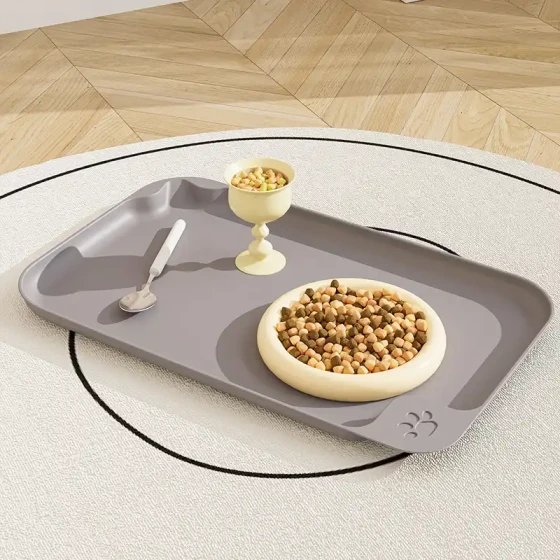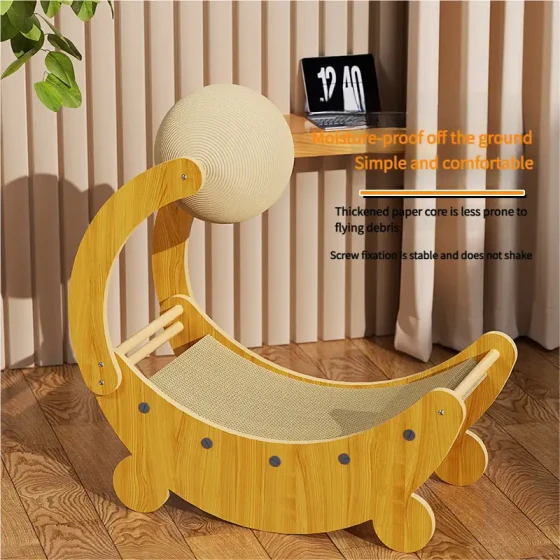Pet Cat Care Methods_Scientific Cat Raising 10 Practical Tips
Raising a lively, adorable, healthy, and happy pet cat is the lifestyle pleasure that many modern people pursue. However, raising cats is not simply providing food and shelter; it is a science that requires dedicated learning. To achieve “scientific cat raising,” the core lies in understanding the cat’s nature and needs, providing a comfortable and healthy living environment, and closely monitoring their physical and mental health.

Scientific cat raising means we need to treat cats like family members, seriously learning and practicing a series of care skills that cover diet, living conditions, medical care, and behavior. This not only helps cats live longer and healthier but also lets owners enjoy the sweet time with their furry friends, avoiding pitfalls and unnecessary troubles.
Pet Cat Care Methods: 10 Practical Tips for Scientific Cat Raising
1. Balanced Nutrition: The Foundation of Cat Health
Cats are pure carnivores, meaning they need to obtain essential nutrients from meat, especially taurine and arginine. Choosing high-quality cat food is paramount.
* High-quality cat food selection: Common cat foods on the market include dry food, wet food (cans, cat sticks, etc.), and raw meaty bones (BARF diet).
* Dry food: Convenient for storage and feeding but low in moisture; long-term feeding of only dry food may increase the risk of urinary system diseases. When choosing, pay attention to the ingredient list; prioritize cat food with meat as the first ingredient and without grains (such as corn, wheat), or with low grain content.
* Wet food: High moisture content helps cats supplement water and reduce urinary system disease risks. Wet food usually has better palatability but is relatively expensive and should be consumed or refrigerated quickly after opening.
* Raw meaty bones: Closer to cats’ natural diet in the wild, but requires strict hygiene management during preparation and storage to avoid bacterial infections. It is recommended to conduct this under professional guidance.
* Quantitative feeding to avoid obesity: Cats naturally like to eat, but "gaining three jin during festivals" is not a good thing. Excessive obesity can cause diabetes, arthritis, heart disease, and various other illnesses. Determine the daily feeding amount based on the cat’s age, weight, activity level, and food energy density, feeding small amounts multiple times a day, such as 2-3 meals daily.
* The importance of fresh drinking water: Water is the source of life, especially for cats. Many cats dislike drinking stagnant water from bowls; try using a flowing water fountain or place multiple water bowls around the home to encourage increased drinking. Keeping the water bowls clean is also crucial; it is recommended to wash daily and replace with fresh water.
2. Comfortable and Hygienic Living Environment: Creating a Little World for Cats
A clean, safe, and comfortable living environment is the foundation of cats’ physical and mental health.
* Correct selection and cleaning of litter boxes: The litter box is cats’ "toilet." Choose a large-size, open or semi-enclosed litter box, and place it in a quiet, private location. The number of litter boxes should be “the number of cats + 1,” for example, if you have one cat, prepare two litter boxes. Clean the litter at least once daily, thoroughly clean the box and replace litter monthly to reduce bacteria growth and odors.
* Regular cleaning of living spaces: Cats like cleanliness and shed fur, so regular vacuuming and wiping of furniture are necessary. Maintain indoor ventilation to avoid dampness and odors.
* Appropriate temperature and humidity: The optimal room temperature for cats is about 20-25 degrees Celsius, with humidity around 50%-60%. Pay attention to heat prevention in summers and keeping warm during winters.
3. Regular Vaccination and Deworming: Guardians of Disease Prevention
Vaccination and deworming are the most effective ways to prevent common infectious and parasitic diseases in cats.
* Types and timing of vaccines: Kittens usually start the first dose of triple or quadruple cat vaccine at about 8 weeks old, then receive another dose every 3-4 weeks for 2-3 doses total. Adult cats receive an annual booster. Rabies vaccine is also essential. Be sure to take cats to a certified vet hospital for vaccination and select suitable vaccine types under professional veterinary guidance.
* The importance and frequency of internal and external deworming: Internal parasites (such as roundworms, tapeworms) and external parasites (such as fleas, mites) severely affect cat health. It is recommended to deworm kittens before the first vaccine, then regularly deworm based on living environment and vet recommendations—typically internal deworming every 3 months, external deworming monthly.
4. Pay Attention to Physical Health Signals: Be the Cat’s “Health Detective”
Cats have a strong tolerance and often do not show illness easily. As owners, we need sharp eyes to detect abnormalities in time.
* Daily observation: Spend a few minutes daily to observe the cat’s appetite, water intake, spirit, excreta (shape, color, frequency of urine and feces), and breathing, gait, etc.
* Common disease symptom identification:
* Loss of appetite, lethargy: Possible general signs of sickness.
* Vomiting, diarrhea: May relate to improper diet, parasites, or gastrointestinal diseases.
* Sneezing, runny nose, coughing: Watch out for respiratory diseases such as feline viral rhinotracheitis.
* Frequent licking or scratching a certain area: May indicate skin diseases or parasites.
* Difficulty urinating, bloody urine: Common signs of urinary system diseases.
* The necessity of regular check-ups: Like humans, cats need regular health check-ups, especially senior cats. It is recommended to take cats for a comprehensive health examination yearly, including blood routine, biochemistry, urine test, etc., to discover and intervene in potential health problems early.
5. Moderate Exercise and Play: Release the Cat’s Nature
Although cats spend most of their time sleeping, they still need sufficient exercise to maintain physical health and psychological happiness.
* The importance of interactive games: Spend at least 15-30 minutes daily playing interactively with cats, such as using a teaser wand or laser pointer. This not only expends energy to prevent destructive behavior but also strengthens the bond between you and your cat.
* Toy selection and usage: Choose safe cat toys like small balls, feather sticks, scratching boards, etc. Regularly rotate toys to keep cats interested.
* Avoid boredom and destructive behavior: If cats are bored for long periods, they may scratch furniture, over-groom, or even show aggression. Providing enough toys and scratching posts, and setting up cat trees for climbing and jumping can effectively prevent these issues.
6. Fur Care and Grooming: Keep Cats Shiny and Beautiful
A cat’s fur is not only its "coat" but also a health barometer.
* Regular brushing: Especially for long-haired cats like Persian and Ragdoll, daily brushing is needed to prevent tangling and hairball problems. Short-haired cats only require brushing 2-3 times per week. Brushing removes dead hair, reduces hair ingestion, and promotes blood circulation.
* Nail trimming: Regularly trim cats’ nails, usually every 2-4 weeks, using special nail clippers and avoiding blood vessels. Trimming nails prevents cats from scratching people or furniture.
* Dental care: Cats can develop tartar, gingivitis, and other oral problems. Try training cats to brush teeth from a young age or use dental treats and dental water to help clean their mouths. Regular professional dental cleaning is advised, especially when symptoms like bad breath or gum redness occur.
7. Scientific Socialization and Behavior Training: Cultivate Well-Behaved Cats
Cats are not aloof creatures; scientific socialization and proper behavior training can make them friendlier and easier family members.
* Kitten socialization: In the kitten stage (2-7 weeks old), frequent exposure to different people, environments, and sounds helps them build good characters and reduces fear of new surroundings.
* Correcting undesirable behaviors: For behaviors such as furniture scratching or inappropriate urination, guide patiently rather than punish. Provide multiple scratching boards and attract cats with catnip, or clean soiled areas thoroughly and use scents cats dislike to deter.
* Building trust relationships: Through gentle petting, rewarding treats, and shared playtime, establish deep trust and affection with your cat.
8. Neutering and Contraception: A Responsible Choice
Unless breeding is needed, it is recommended that cats of appropriate age undergo neutering.
* Benefits of neutering:
* Health benefits: Greatly reduces the risk of pyometra and mammary tumors in female cats; lowers the risk of testicular tumors and prostate diseases in males.
* Behavioral benefits: Reduces calling and inappropriate urination during females’ estrus; reduces fighting, running away, and spraying urine in males due to mate competition.
* Control of stray cat population: Reduces the source of stray animals, easing social burdens.
* Notes on neutering surgery: Choose a certified veterinary hospital, fast and withhold water before surgery, and ensure proper wound care and warmth after surgery.
9. Emergency Preparedness and First Aid Knowledge: Be Prepared
Accidents can happen anytime. Mastering basic first aid knowledge and preparing for emergencies can save your cat’s life at critical moments.
* Home first aid kit: Prepare common medicines and tools, such as saline, povidone-iodine, cotton swabs, gauze, hemostatic powder, thermometer, cat nail clippers, etc.
* Pet hospital contact information: Be familiar with the address and phone number of nearby 24-hour pet hospitals for emergencies.
* Common poisons: Know foods and plants toxic to cats (such as lilies, chocolate, onions, grapes, etc.) to prevent accidental ingestion.
* Learn simple first aid: For example, how to perform the Heimlich maneuver for choking cats (to be learned under professional veterinary guidance) and how to handle minor injuries initially.
10. Love and Companionship: The Best Medicine
No amount of material conditions can replace the owner’s sincere love and company. Cats are emotionally rich animals and need attention and care.
* Spend time together: Even quietly staying together or gently petting them can make cats feel safe and happy.
* Understand cat language: Learn to read cats’ body language and vocalizations to understand their emotions and needs.
* Patience and tolerance: Challenges are inevitable during cat raising; maintain patience and tolerance, and solve problems with love.
Frequently Asked Questions
Q1: Do cats have to be vaccinated?
A1: Yes, cats must be vaccinated. Vaccines effectively prevent fatal infectious diseases like feline panleukopenia, feline viral rhinotracheitis, and feline calicivirus.
Q2: What if the cat dislikes drinking water?
A2: Try using a flowing water fountain, adding a small amount of meat broth (unsalted) to water, increasing wet food feeding ratio, or placing multiple water bowls to encourage drinking.
Q3: What to do if the cat always scratches the sofa?
A3: Scratching is a natural behavior. Provide multiple scratching boards or posts at places your cat likes to scratch and guide their use. Catnip can attract them, and timely stop sofa scratching; reward use of scratching boards.
Q4: Can cats eat human food?
A4: Most human food is unsuitable for cats; some are toxic, such as chocolate, onions, grapes, and alcohol. Cats should mainly eat cat food specially formulated for them.
Q5: Why does the cat urinate inappropriately?
A5: Many reasons exist, such as dirty litter box, unpalatable litter, environmental stress (moving house, new pets), or urinary system diseases (like cystitis). If environmental and behavioral causes are excluded, take the cat to the hospital immediately for examination.
Q6: Is it normal for cats to sleep a lot every day?
A6: Cats sleeping 12-16 hours daily is normal; kittens and senior cats may sleep even longer. This is their habit. But if the cat suddenly becomes excessively sleepy or shows other abnormal symptoms, vigilance is needed.
Conclusion
Scientific cat raising is a journey full of learning and dedication, requiring not only material satisfaction but also spiritual care and understanding. Every cat is a unique life and a family member deserving of our meticulous care. Mastering these scientific cat-raising tips enables you to better understand and care for your beloved cat, sharing each day filled with love and joy together.
References
- American Veterinary Medical Association (AVMA) Recommendations on Pet Health
- International Society of Feline Medicine (ISFM) Cat Welfare Guidelines
- Pet Disease Prevention and Control Guidelines issued by the Ministry of Agriculture and Rural Affairs
- Relevant literature from the Chinese Association of Animal Husbandry and Veterinary Medicine Small Animal Medicine Branch
- World Animal Protection (WSPA) Animal Welfare Report





